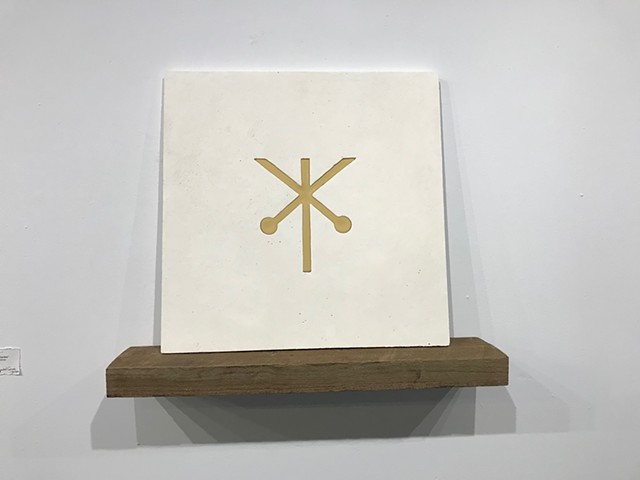Hobo Code Series
After my research on homelessness I discovered how the World War I veterans traveled the railroad system and developed a code system not unlike the marks that prehistoric cave dwellers made. Humans have been coding for centuries. Hobo codes include marks describing where to find food, who you can trust and where you can find a safe place to sleep – directional signs and even signs warning against guard dogs and kind humans (gendered) were made on the sides of homes, building and train cars. This coding system kept men and women safe and part of an underground community.
Process
I form the symbols out of oil based clay surrounding it with a sealed framed system. I then pour wet plaster into the frame – when the plaster is dry I remove it from the frame and remove the clay that has created a cavity.
After the cavity is cleaned and excavated I then pour hot beeswax filling the cavity. The plaster represents building systems of that era, work that kept most men employed. The beeswax is a natural building material with both systems supporting the idea of shelter as being a natural human right.


